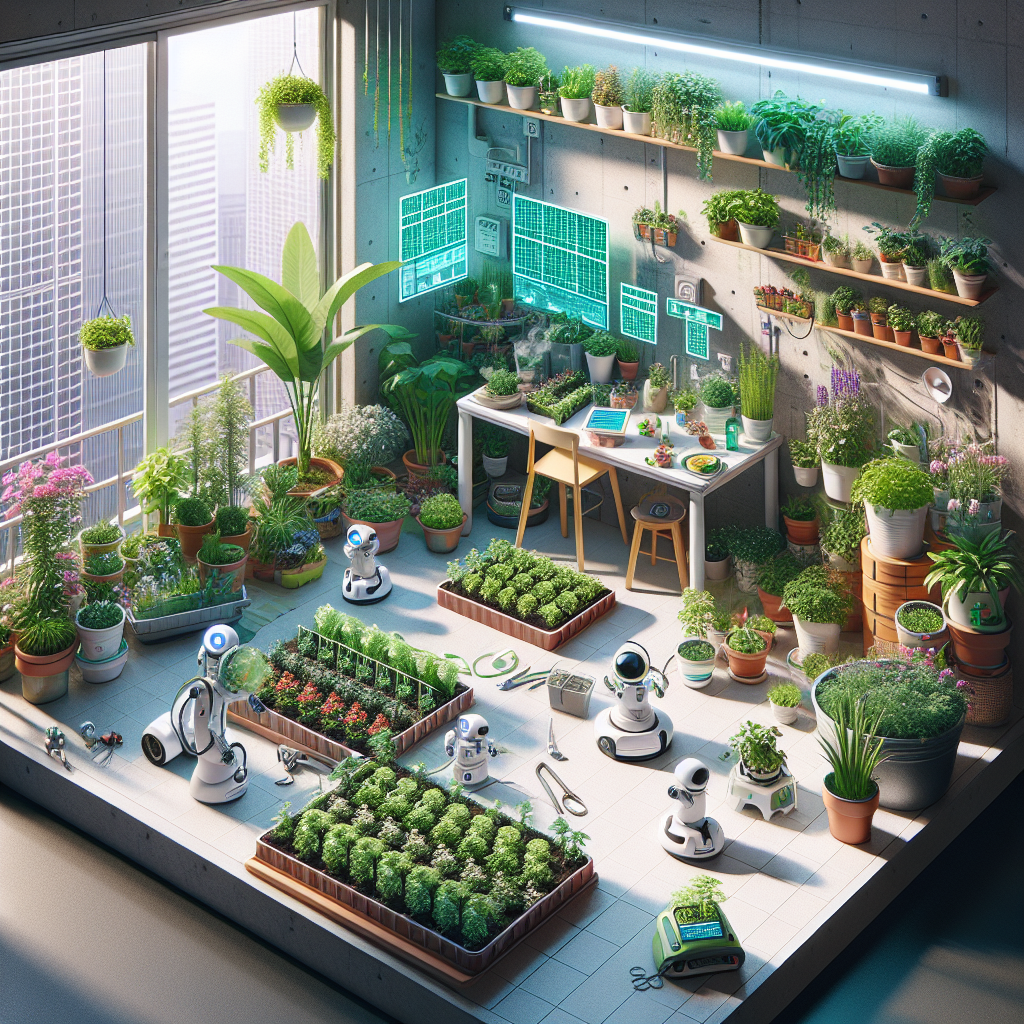Introduction
The concept of apartment gardening has garnered significant attention as urban dwellers seek to establish green spaces within their homes. This form of horticulture not only enhances the aesthetics of living areas but also contributes to improved air quality and mental well-being. Adeptly converting limited spaces into vibrant gardens necessitates a strategic approach, encompassing plant selection, space utilization, and maintenance.
Overview of Apartment Gardening
Apartment gardening entails cultivating plants within the confines of an apartment, utilizing natural light and small spaces efficiently. This practice includes indoor plants, balcony plants, or small patio gardens, employing containers, vertical garden structures, or hydroponics systems. The modularity and flexibility of apartment gardening make it accessible to a wide demographic, regardless of their living space proportions.
Benefits of Apartment Gardening
The plethora of benefits associated with apartment gardening is well-documented. These benefits include enhanced air quality, with plants acting as natural air purifiers by filtering airborne toxins. Moreover, the presence of greenery within living space contributes significantly to residents' psychological well-being, reducing stress and promoting relaxation. Additionally, apartment gardens can contribute to sustainability efforts by providing residents with fresh produce, thus reducing the carbon footprint associated with grocery shopping.
"Apartment gardening offers measurable environmental and health benefits," notes Dr. Lucy Jones, a horticultural therapist and published author. "It’s a tangible way to combat air pollution, encourage biodiversity and reconnect with nature in the urban jungle."
Case Study 1: Successful Apartment Gardening in a Small Space
The case of Alice Hart, who transformed her 600 square-foot apartment into a thriving garden, exemplifies the potential of apartment gardening. Hart judiciously selected a variety of low-maintenance, shade-tolerant plants to complement her limited light availability. Through the implementation of hanging pots and modular shelving, she maximized vertical space and efficiently organized her plant collection. Hart's case demonstrates that with creativity and careful planning, even the smallest apartments can host a rich diversity of plant life.
Planning Your Apartment Garden
Establishing an apartment garden requires meticulous planning to optimize space and ensure plant health. This involves assessing light conditions, available space, and personal time commitment. It's also crucial to outline a watering schedule and potentially consider self-watering systems for plant hydration consistency. The selection of appropriate pots and planters that provide adequate drainage and support for plant growth is another key planning aspect.
Choosing Suitable Plants for Apartment Gardening
The selection of plants conducive to apartment conditions is paramount. Factors such as light requirements, growth habits, and care levels need to be considered. For instance, plants like pothos, spider plants, and peace lilies are well-known for their adaptability to indoor conditions and ease of care. Herbs such as basil, parsley, and mint also thrive in apartment settings and offer the added benefit of culinary usage.
"Understanding a plant's natural habitat and replicating those conditions is vital to successful apartment gardening," states Ethan Summers, an urban horticulturist. "Select plants that will not only survive but thrive in the unique environment that your home provides."
Case Study 2: Innovative Techniques for Vertical Gardening in Apartments
Mia Robertson’s pioneering vertical gardening system epitomizes innovation in apartment gardening. Robertson, living in a studio apartment, leveraged vertical space by installing a wall-mounted garden panel that houses a variety of edible and ornamental plants. Her system incorporates a drip irrigation system for efficient water management and LED grow lights to supplement natural sunlight. Robertson’s approach highlights how vertical gardening can effectively expand the horticultural potential of limited living spaces.
Caring for Your Apartment Garden
Proper care is essential to sustain a healthy apartment garden. This includes regular watering, pruning, and fertilizing, tailored to the specific needs of each plant species. Monitoring for pest infestations and diseases is also crucial, with non-toxic pest control methods being preferred to maintain an organic environment. Seasonal adjustments may be necessary to accommodate varying light levels and temperatures throughout the year.
Common Challenges in Apartment Gardening and How to Overcome Them
Challenges such as limited light, space constraints, and proper ventilation frequently arise in apartment gardening. Solutions include utilizing reflective surfaces to amplify light, selecting dwarf or compact plant varieties, and ensuring regular air circulation with fans or by opening windows. Additionally, engaging with a community of apartment gardeners can provide valuable insights and innovative solutions to shared challenges.
Conclusion
Apartment gardening presents a viable avenue for urban inhabitants to cultivate their own green spaces, reaping both environmental and personal benefits. Its impact on sustainability and well-being cannot be understated, as it provides a proactive approach to improving air quality, enhancing mental health, and promoting an eco-friendly lifestyle within the confines of urban housing.
Call to Action
For those inspired to embark on apartment gardening, continuous learning and community engagement are encouraged. Participate in online forums, attend local workshops, and consult with experts to further enhance your gardening experience. Share your progress and insights, and contribute to the growing body of knowledge surrounding this fulfilling and beneficial practice.
Topics




